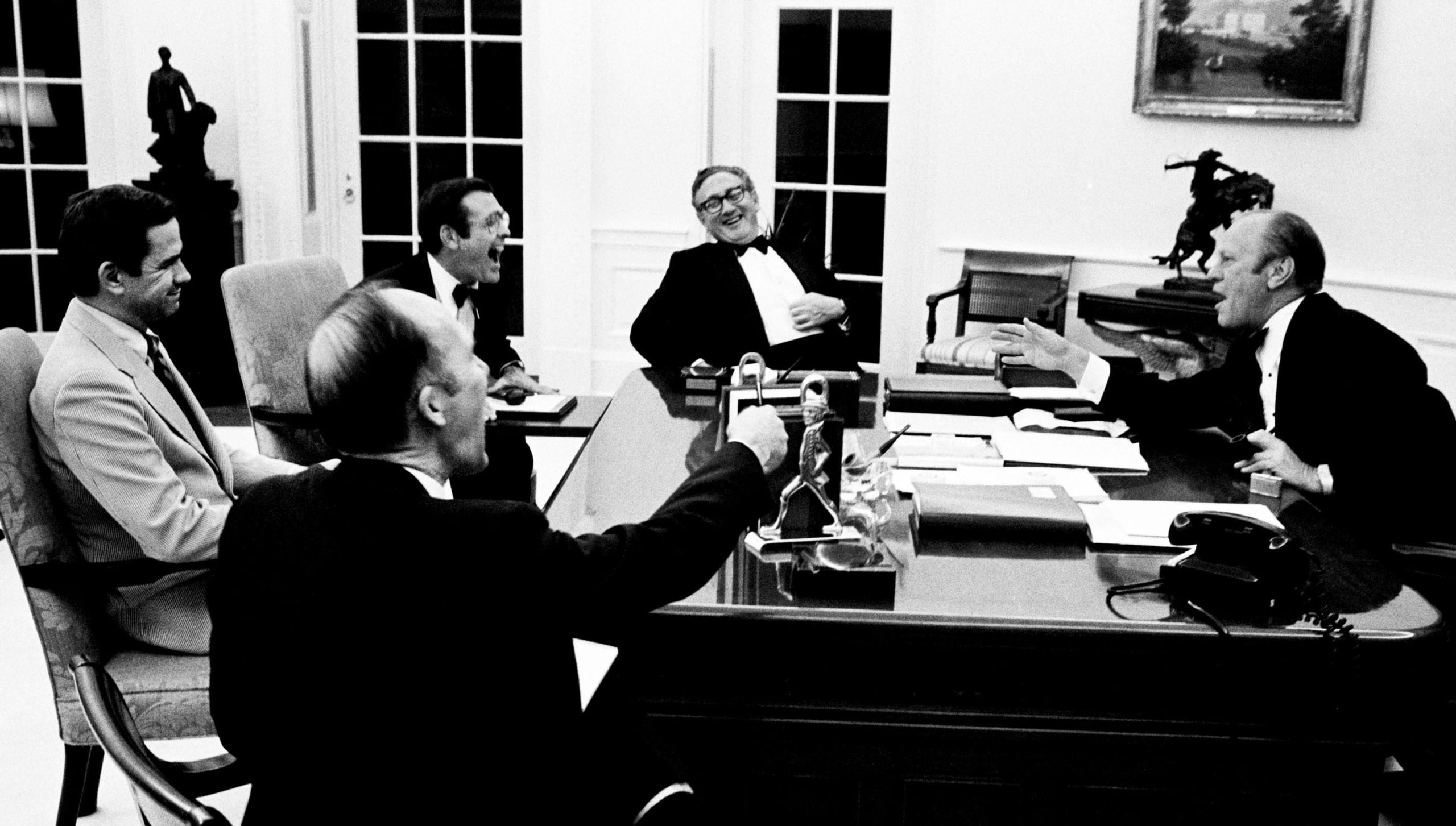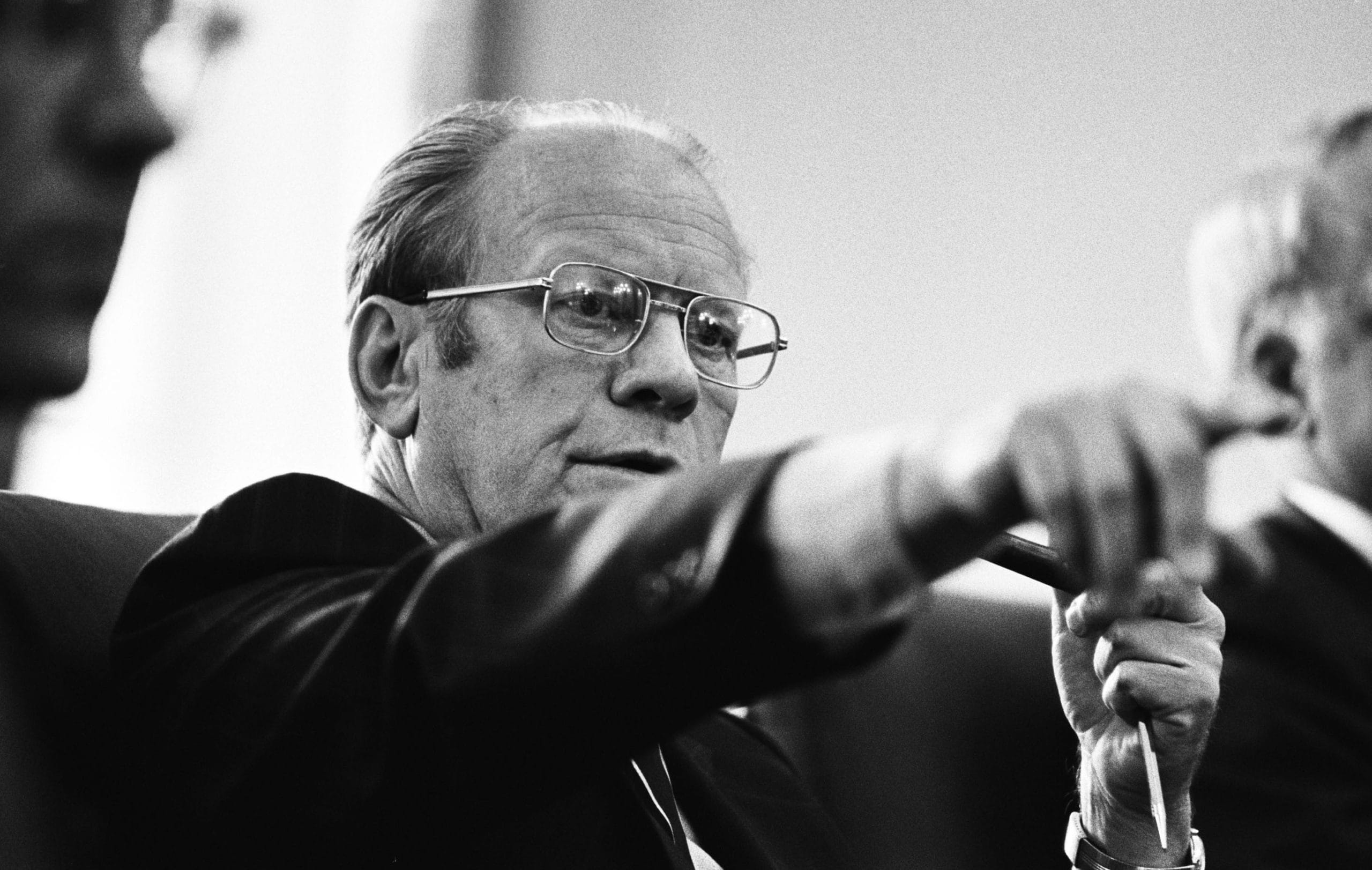On May 12, 1975, two weeks after the evacuation of Vietnam, President Gerald R. Ford faced another international crisis: an American cargo ship, the SS Mayaguez, was captured by Khmer Rouge forces off the coast of Cambodia near Kom Pong Som. The drama played out over four days in Cambodia, and inside the White House where life and death decisions were made to end the crisis. I was in the room documenting what happened. My son Byron Hume Kennerly recently interviewed me on video about the incident.
After word of the ship’s capture reached the president the administration tried to secure the release of the crew through diplomatic channels. They sent messages through the Chinese who were allies of the Khmer Rouge. There was no reply, however, and some doubt that anyone, including the Chinese, really knew who was running the show in Cambodia. The president was certain of one thing, he had to get the crew back, and fast. The National Security Council was called into emergency session, and contingency plans were presented to the President Ford, ranging from massive B-52 strikes around the capital of Phnom Penh to more localized military operations.

Throughout the discussions I shot photographs of the NSC meetings that were primarily held in the Cabinet Room. Assembled around that big table were the nation's big shots: the President, Vice President, Secretaries of State and Defense, Chairman of the Joint Chiefs of Staff, Director of the CIA, Chief of Naval Operations, the White House Chief of Staff, and well you get the picture.
The debate of course centered on the problem of releasing the captured ship. Each proposed solution assumed the existence of a viable government in Phnom Penh, one that would cave in under military pressure. One option on the table was darkening the skies above Cambodia with B-52s and bombing the shit out of them, bringing the Khmer Rouge to their knees. That seemed like a particularly bad option to me.

I’d never spoken out in a presidential meeting, but this time I couldn't contain myself. I might have been the only person in the room who had ever been in Cambodia, in fact the CIA had flown me in there a few weeks earlier on a fact-finding mission on March 29th just days before the country fell to the Communists.
"Has it occurred to anyone," I asked the startled group, "that this whole thing may have been the act of one local commander taking matters into his own hands and seizing the ship?"
The President did not choose to exercise his strongest option, and the B-52s never took off from Guam. Instead, Navy fighters from a nearby aircraft carrier made an air strike around Kom Pong Som, and the Marines landed on a small island where the seamen were thought to be held. Ford also ordered jet fighters to blow some Cambodian patrol vessels out of water. The local attacks, Captain Miller of the Mayaguez later said, saved him and his crew. I photographed the President jubilantly announcing to his top aides that the crew had been released. You could almost see the weight of the last three days lift from the president's shoulders as he spoke.

It’s worth noting also that In some of the Mayaguez meetings, the president’s advisers offered up hypotheticals on how certain decisions might “play.” They wanted to make sure the world knew that America might still use overwhelming force in achieving its ends. Mr. Ford didn’t want to hear that. He had no bloodlust. He knew Vietnam was a debacle; it had been his painful duty to oversee the end of that horrible chapter of American history. But he refused to make innocent Cambodians pay for America’s mistakes in Vietnam.
The photo of the president, glasses on his head as he makes a key decision is emblematic of him finally making the presidency his own. If it needs a word to describe it and him, “resolute” comes to mind. The man I came to know, admire, and love had a quiet and powerful sense of self, and he easily passed that confidence on to all who surrounded him.

An avid golfer to the end, he would never surreptitiously nudge his ball to improve his lie, and that was a central theme to his character. No single picture will ever sum up the life of President Ford. One picture does, however, cast a momentary glimpse into the soul of a man who will be missed in an era where character doesn’t seem to count as much as it did then.

Leave a Reply
You must be logged in to post a comment.